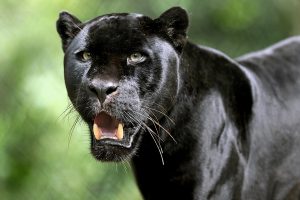DNA confirms there is a big cat roaming the UK’s countryside

 In a groundbreaking discovery, DNA evidence has confirmed the presence of a large feline predator, likely a leopard, in the serene expanses of the UK’s Lake District.
In a groundbreaking discovery, DNA evidence has confirmed the presence of a large feline predator, likely a leopard, in the serene expanses of the UK’s Lake District.
The revelation comes after a detailed analysis of genetic material retrieved from a deceased sheep, marking the first instance of such evidence on British soil.
The University of Warwick’s laboratory, spearheaded by the esteemed Prof Robin Allaby, has been at the forefront of this investigative journey. Prof Allaby, in an interview with BBC Wildlife, expressed his newfound conviction in the existence of non-native big cats in the UK, a stance that evolved from cautious skepticism to firm belief following the DNA results.
“It makes me a convert [to the existence of non-native big cats in the UK],” Allaby said. “Until now, I have remained open-minded, I think that’s my job as a scientist.”
This isn’t the first encounter Prof Allaby has had with potential evidence of big cats in the region. A mysterious claw fragment, sent anonymously from the north of England, had previously hinted at the presence of these elusive creatures.
However, it was the recent discovery by Sharon Larkin-Snowden, a Cumbrian local, which provided the tangible proof that has since shifted narratives and piqued curiosity.
Larkin-Snowden’s encounter with the remnants of a sheep and her subsequent sighting of a large black cat, comparable in size to a German shepherd dog, adds a personal and compelling layer to the scientific findings.
Her experience, shared on Rick Minter’s Big Cat Conversations podcast, paints a vivid picture of the unexpected wildlife that may roam the UK’s countryside.
“I assumed at first it was a sheepdog, but then I did a double take and realised it was a black cat,” she said. “It was big – the size of a German shepherd dog.”
For now, the Lake District harbors a new narrative, one where the whispers of a big cat’s presence are no longer just local lore but a scientific reality.




